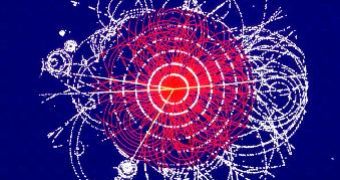Tomasz Skwarnicki, a physicist from Syracuse University, is among the scientists interested in the search for the Higgs boson. This boson is the elementary particle that confers mass to all the other particles. According to the standard model, there can be only one such particle, but recent calculations resulted in the possibility of seven of them existing, going beyond the commonly-accepted models. It remains that experiments like the one performed by CERN scientists at the Large Hadron Collider prove whether this is true or not.
According to Skwarnicki, “It's pretty clear that the standard model of physics is not enough to explain all the phenomena in nature. Through looking at a variety of phenomena - one of them being dark matter - we know that there is a whole set of interactions beyond our standard model”. The scientist is involved in the Cornell Electron Storage Ring (CESR) experiment's CLEO particle detector (short from Cleopatra, a name that would match the CESR abbreviation, pronounced Caesar) in Ithaca, New York.
“Our measures restricted the range of new physics models,” states Skwarnicki. “We closed some gaps in measurements that had existed before.” Among the seven Higgs bosons proposed by the new models, there is a CP-odd one, which “would change all knowledge of all Higgs decays. But to make it work, this CP-odd Higgs boson would need to be very light. Unfortunately, we did not find this. So the search for experimental evidence of the Higgs boson continues,” he adds.
The physicist believes this Higgs boson theory and the adjacent sub-theories like that of the light boson will soon be tested in practice by detectors in particle accelerators like the Large Hadron Collider, a project in which he is involved himself. “The whole point of the Large Hadron Collider, though other experiments will be performed, is basically to create the energy needed to find the Higgs boson. The LHC should be fully operational next year, and then we’ll have a better idea of whether we need to throw everything out the window. Non-standard models, which are needed to explain some phenomena, will also be affected by this. What we find out about the Higgs boson in Geneva will apply to non-standard models as well.”

 14 DAY TRIAL //
14 DAY TRIAL //